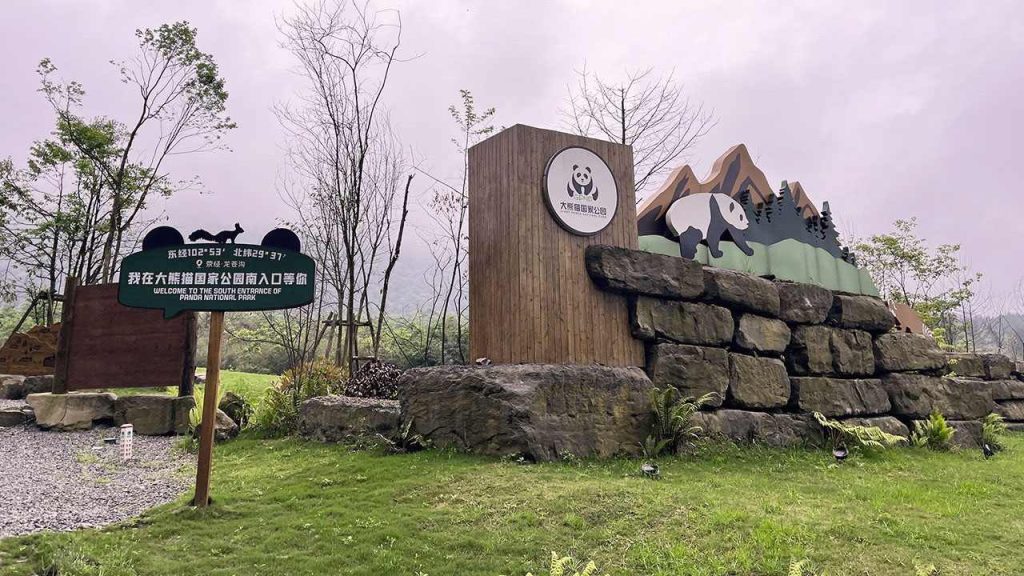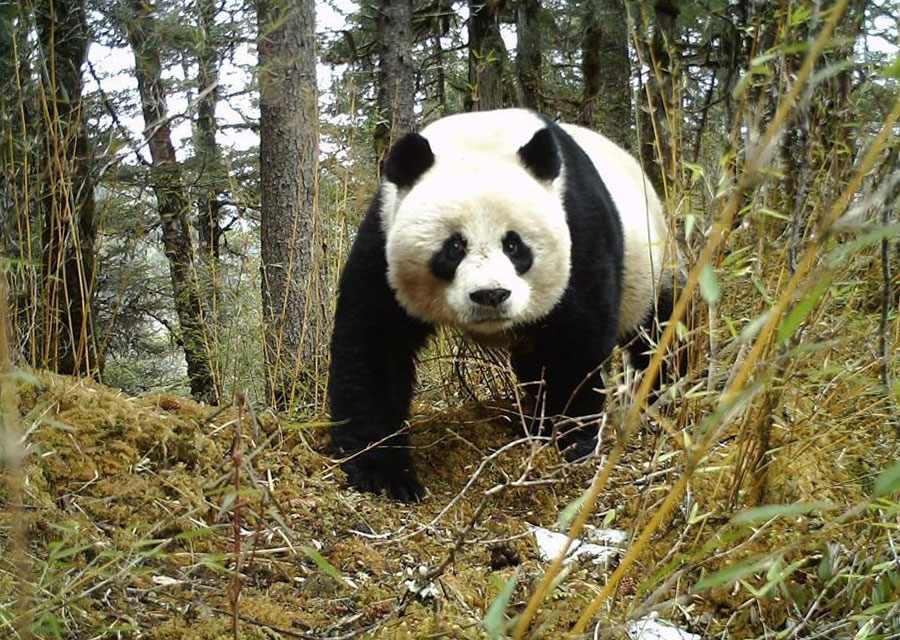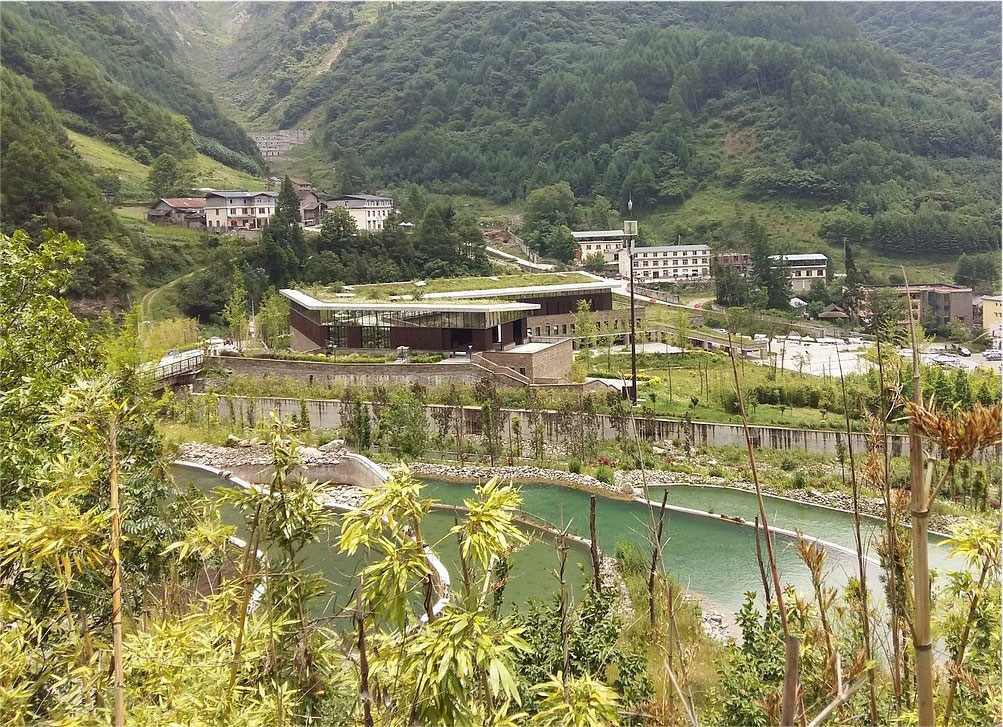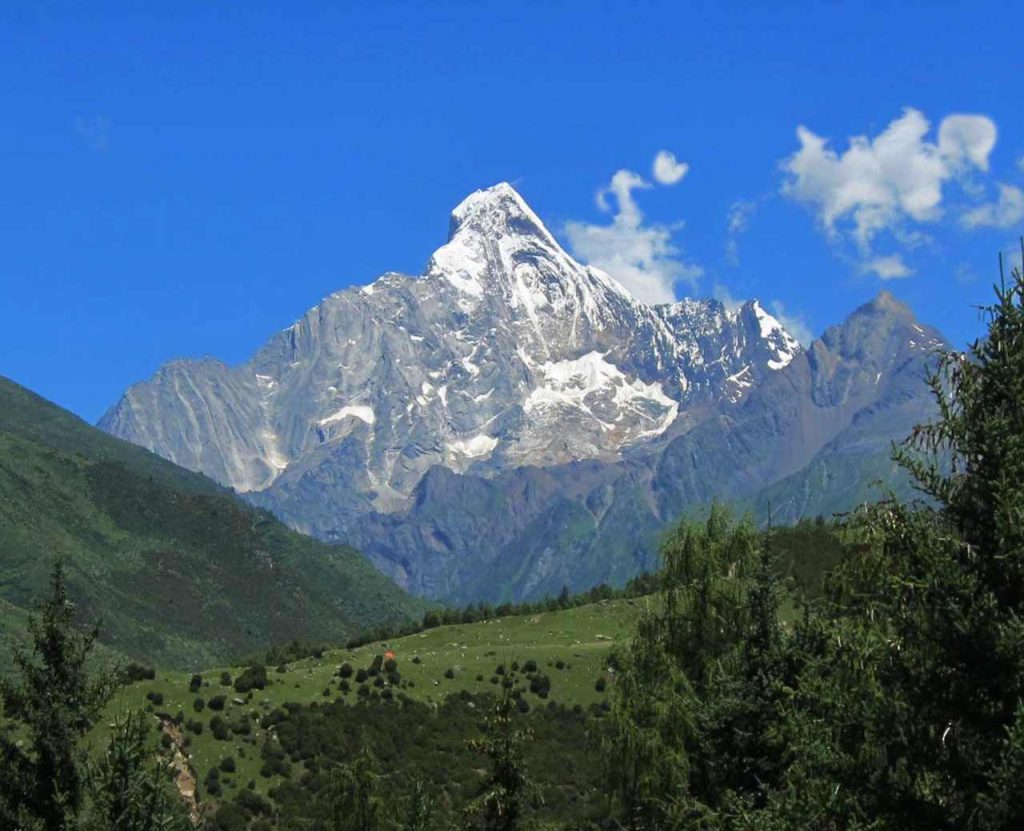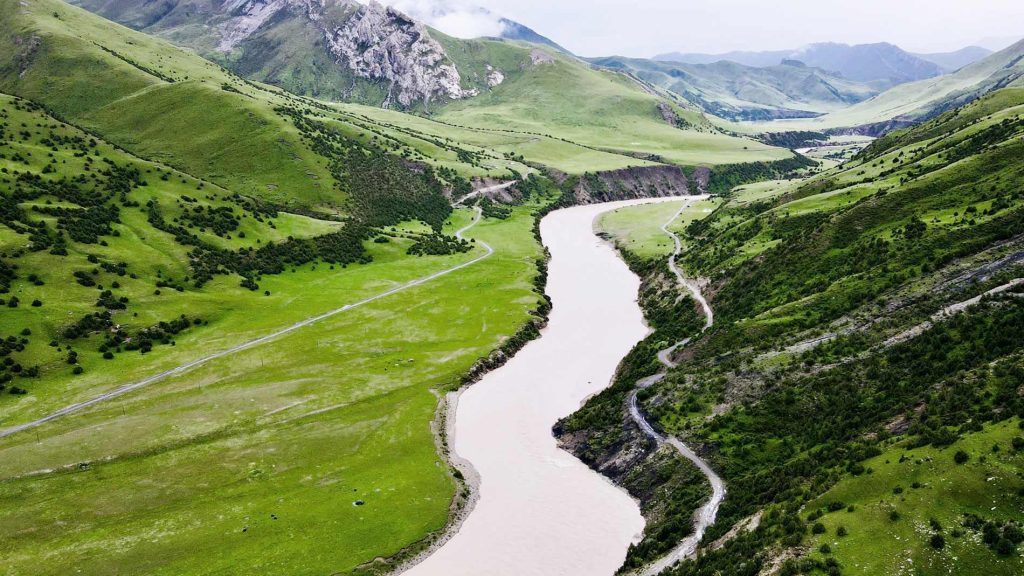Located deep in the Sichuan mountains, the Giant Panda National Park (in Chinese: 大熊猫国家公园) is a must-visit destination for nature and animal lovers. This vast park is home to one of China’s richest ecosystems, where the famous giant panda lives alongside other fascinating species. Additionally, the park is home to indigenous communities that preserve an ancient culture in perfect harmony with their environment. Discover the guide with essential details to plan an unforgettable visit to this natural paradise.
Content
- 1 Information about Giant Panda National Park (大熊猫国家公园)
- 2 How to Get to Giant Panda National Park
- 3 Geography of Giant Panda National Park
- 4 Flora of Giant Panda National Park
- 5 Fauna of Giant Panda National Park
- 6 Recommended Excursions and Activities
- 7 What to See and Do in Giant Panda National Park
- 8 Historic Indigenous Communities in the National Park
- 9 Gastronomy in the National Park and Surrounding Areas
- 10 Accommodations in the National Park and Nearby Areas
Information about Giant Panda National Park (大熊猫国家公园)
History
Giant Panda National Park was established in 2016 with the goal of protecting the habitat of the giant panda and other endangered species living in the region. It covers more than 27,000 square kilometers, combining several nature reserves and protected areas to form a vast ecological corridor. Over the years, the park has evolved into a symbol of conservation efforts in China, attracting both researchers and curious tourists eager to see these animals in their natural environment.
Location
The park is primarily located in Sichuan province, though it also extends into parts of Shaanxi and Gansu. Its main protected areas include Wolong, Foping, and Baishuijiang, making it one of the largest and most diverse reserves in China. Accessing these areas allows exploration of some of the country’s most mighty and remote landscapes.
Best Time to Visit Giant Panda National Park
The best time to visit the park is between April and October. During this period, the climate is more favorable, and the vegetation is at its peak, making it easier to observe wildlife. The spring and autumn months are especially recommended for those wishing to avoid crowds and enjoy mild weather.
How to Get to Giant Panda National Park
From Chengdu
Chengdu, the capital of Sichuan, is the main gateway to the park. You can take a bus or train from the city to the Wolong Reserve, the most accessible area of the park. The journey takes approximately 3 hours by car.
From Chongqing
Another option is to travel from Chongqing, one of the main neighboring cities. The train journey from Chongqing to Chengdu takes about 2 hours, and from there, you can continue to the park. There are also direct bus connections.
From Xi’an
From Xi’an, the capital of Shaanxi province, you can access the park via the Foping Nature Reserve, located at the northern edge of Giant Panda National Park. The high-speed train to Hanzhong, followed by a bus trip, is a popular option.
From Emeishan
Emeishan, famous for its namesake mountain, is a short distance from Chengdu. From here, you can take a bus or train to connect with the routes leading to the park, making Emeishan an interesting stop before or after the visit.
Geography of Giant Panda National Park
The park spans a mountainous landscape with altitudes ranging from 1,500 to 5,000 meters above sea level. This geographical diversity creates a wide variety of microclimates and habitats that support multiple species. The Qionglai and Minshan mountains are the park’s main mountain ranges, where rivers like the Minjiang flow, providing water and nutrients to the surrounding ecosystems.
Flora of Giant Panda National Park
The park is famous for its dense bamboo forests, the giant panda’s primary food source. It also hosts a wide variety of plants, such as rhododendrons (Rhododendron) and firs (Abies), which grow in the cooler high altitudes. The park’s flora changes with altitude, with subtropical jungles at lower elevations and alpine forests on the peaks.
Research shows that within Giant Panda National Park in the Shaanxi area, 2,065 species of higher plants have been recorded, of which 41 have important state protection, and 574 are endemic to China.
Among the most notable species are different varieties of bamboo, such as arrow bamboo (Fargesia robusta), which is essential for the panda’s diet, as well as black bamboo (Phyllostachys nigra). You can also find Chinese yews (Taxus chinensis), known for their longevity, and rare pine species like Chinese red pine (Pinus tabuliformis).
At higher altitudes, trees like the Himalayan blue pine (Pinus wallichiana) and the Tibetan spruce (Picea asperata) grow, while in lower, more humid areas, you can find rare orchids and giant ferns. This diverse environment makes the park a haven not only for wildlife but also for botanists and plant enthusiasts.
Fauna of Giant Panda National Park
The park is home to 342 species of wild vertebrates, including 51 that are under key state protection in China and 26 that are endemic to the country.
Giant Panda (Ailuropoda melanoleuca)
The giant panda is undoubtedly the star of the park. These animals, known for their black and white fur, can be spotted in the Wolong and Foping areas. Although their population is small, conservation efforts have helped the species move from critically endangered to vulnerable.
Golden Snub-Nosed Monkey (Rhinopithecus roxellana)
This species of monkey is another gem of the park’s fauna. Its unusual facial features and golden fur make it easy to recognize. They live in the temperate forests of the park and are known for their social behavior and ability to survive in cold climates.
Takin (Budorcas taxicolor)
The takin, a native bovid species of the region, inhabits the mountainous areas of the park. Its robust appearance and curved horns make it an imposing and fascinating animal to observe.
Snow Leopard (Panthera uncia)
The elusive snow leopard also inhabits the high mountains of the park, although it is very rare to spot. Its dense fur and ability to camouflage make it one of the most difficult predators to observe.
Recommended Excursions and Activities
You can enjoy a wide range of activities, from hiking to wildlife observation. There are multiple trails and routes for all levels, including guided walks to spot pandas and other species. The routes offer opportunities for deep immersion in nature, with strategic stops for observing rare animals and plants.
What to See and Do in Giant Panda National Park
Wolong Valley
Wolong Valley is one of the most popular destinations within the park. It is home to the largest panda research base in the world, where you can learn about conservation efforts.
Foping Nature Reserve
This reserve in the northern part of the park is home to wild pandas and other rare species. It is a less-visited area, making it an excellent spot for those seeking a quieter, more authentic experience.
Dujiangyan Panda Research Base
The Dujiangyan base offers a close-up experience with pandas. You can observe how these animals are cared for and learn about breeding and release programs.
Baishuijiang Nature Reserve
This area is known for its biodiversity. In addition to pandas, the reserve is home to a large number of birds and other endangered mammals.
Mount Siguniang
Known for its four peaks, Mount Siguniang is a spectacular hiking destination. It offers stunning views and the opportunity to explore one of the park’s wildest areas.
Tangjiahe Reserve Trail
This trail takes you through one of the densest forests in the park, ideal for wildlife observation, including takins and various bird species.
Wildlife Observation
Local guides offer specialized tours to observe wildlife in its natural habitat, from giant pandas to snow leopards.
Historic Indigenous Communities in the National Park
Qiang Ethnic Group
The Qiang are an indigenous ethnic group from the Sichuan mountains, known for their stone architecture and rich cultural traditions. Explore Qiang villages and learn about their customs and way of life.
Tibetan Ethnic Group
The park is also home to several Tibetan communities, whose inhabitants have lived in harmony with nature for centuries. Visits to these villages offer an immersion into their religious practices and agricultural traditions.
Gastronomy in the National Park and Surrounding Areas
Typical Sichuan Cuisine
Sichuan cuisine is known for its bold flavors and the use of Sichuan pepper. Be sure to try local dishes such as mapo tofu and hotpot in the areas surrounding the park.
Local Products: Edible Bamboo
Bamboo is not only the pandas’ favorite food but is also used in various local dishes. Fresh bamboo is a specialty worth trying in regional restaurants.
Qiang Ethnic Cuisine
Qiang ethnic cuisine is unique to the region, with fresh ingredients and authentic flavors. Dishes often include lamb, goat, and a variety of mountain vegetables.
Accommodations in the National Park and Nearby Areas
Accommodations in Wolong
Wolong offers a wide range of accommodation options, from luxury hotels to more modest guesthouses. It’s the perfect starting point to explore the valley and surrounding areas.
Accommodations in Dujiangyan
Dujiangyan offers a good selection of hotels and resorts, many of which are located near the panda research base. It’s an excellent place to stay if you seek comfort and proximity to the park’s main attractions.
Accommodations in Chengdu
For those who prefer the comfort of the city, Chengdu offers a wide variety of hotels and accommodations of all types. From here, you can take day trips to the park without sacrificing urban comforts.
Accommodations in Pingwu
Pingwu is a small town offering simpler accommodations but well-located for those wishing to explore the northern part of the park, especially the Baishuijiang and Foping areas.
Next recommended parks: China’s National Parks.

